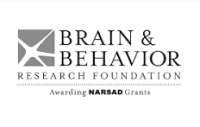Welcome to the Hassan Lab!
We are a neuroscience research lab
and part of the
Brain Research Institute at University of Bremen, Germany.
We are in the process of setting up, stay tuned!
Structure and connections of the hippocampus.
Santiago Ramón y Cajal, 1901.
ABOUT
The brain is remarkably adaptive. We seek to understand the mechanisms behind this flexibility—and what happens when they fail.
Understanding the Brain’s Role in Adaptive Behavior
Our research explores how neural activity drives adaptive behaviors like learning, memory, and decision-making. Using the mouse as a model, we study brain function at multiple levels—from individual cells to neural circuits to behavior. Our goal is to uncover the mechanisms underlying these processes and understand how they are disrupted in conditions like schizophrenia and autism spectrum disorders.
A key focus of our work is the CA2 region of the hippocampus, which plays a crucial role in social memory—the ability to recognize and remember others. Research, including our own, has revealed that:
- CA2 dysfunction is linked to social memory deficits in neuropsychiatric disorders.
- CA2 encodes social information—such as individual-specific social odors—in a highly organized and sophisticated way.
Building on these findings, we are now investigating how CA2 integrates social information into a unified “social map” and how disruptions in this process contribute to neuropsychiatric and neurodevelopmental disorders.
More broadly, we aim to understand how the hippocampus transforms sensory inputs into internal models that guide behavior, particularly in social contexts. By studying these mechanisms, we seek to shed light on how they break down in disorders like schizophrenia and autism, paving the way for new insights into brain function and mental health.
TECHNIQUES
Behavior
Machine learning-assisted behavioral analysis.
SLEAP algorithm-based pose estimation of a mouse (yellow: nose, ears, neck, and tail base) and its trajectory (grey) during exploration in a three-chamber arena sociability task. The task includes a novel stimulus mouse in an enclosure at the lower right corner and an object in the top left corner.
Network
High-resolution in vivo neural activity recordings.
In vivo two-photon Ca²⁺ imaging of hippocampal CA1 pyramidal cells expressing the Ca²⁺ sensor GCaMP6s in an awake mouse exposed to different social odor samples.
Circuit
Detailed in vitro circuit mapping and functional analysis.
In vitro acute brain slice recording. Left: Electrical and optogenetic (not shown) stimulations assess hippocampal circuit function, illustrated here with electrical stimulation of entorhinal cortex layer 2 (ECII) and Schaffer collateral (SC) inputs during whole-cell recording in CA2. Right: Intrinsic voltage response of a hippocampal pyramidal neuron in current clamp following sub- and suprathreshold current injection.
Our research builds on modern techniques of the neuroscientifc toolbox:
High-resolution imaging and electrical recordings capture detailed brain activity, while machine learning-assisted behavioral analysis helps linking the neural patterns precisely to behavior; advanced statistical modeling and targeted interventions identify underlying mechanisms and test for causal relationships.
Together, these methods allow us to examine how different brain regions interact, providing insights into both typical brain function – from cell function, to networks, to behavior – and neurological disorders.
TEAM
Research
Principal investigator
shassan[at]uni-bremen.de
Sami Hassan, PhD
PhD student
vivkis[at]uni-bremen.de
Vivien Kistmacher, MSc
Research assistant
anastr[at]uni-bremen.de
Anastasia Strietzel
Graduate student
martaler[at]uni-bremen.de
Maxim Martaler
Administration and Support
Lab manager
verena.fischer[at]vw.uni-bremen.de
Verena Fischer
Animal specialist
hurbsch[at]uni-bremen.de
Hannah Urbschat
Alumni
Arne Hansen, MSc – Graduate student, 2023 – 2025
Maja Neubauer, MSc – Graduate student, 2023 – 2024
Paula Woest, BSc – Undergraduate student, 2024 – 2025
Lotta Kiefer – Lab intern, 2024
PUBLICATIONS
Pre-prints
Fink, R., Imai, S., Gockel, N., Lauer, G., Renken, K., Wietek, J., Lamothe-Molina, P.J., Fuhrmann, F., Mittag, M., Ziebarth, T., et al. (2025).
PinkyCaMP a mScarlet-based calcium sensor with exceptional brightness, photostability, and multiplexing capabilities.
bioRxiv – https://doi.org/10.1101/2024.12.16.628673
Original articles
Hassan, S.I., Bigler, S., and Siegelbaum, S.A. (2023).
Social odor discrimination and its enhancement by associative learning in the hippocampal CA2 region.
Neuron – https://doi.org/10.1016/j.neuron.2023.04.026.
Piskorowski, R.A., Nasrallah, K., Diamantopoulou, A., Mukai, J., Hassan, S.I., Siegelbaum, S.A., Gogos, J.A., and Chevaleyre, V. (2016).
Age-Dependent Specific Changes in Area CA2 of the Hippocampus and Social Memory Deficit in a Mouse Model of the 22q11.2 Deletion Syndrome.
Neuron – https://doi.org/10.1016/j.neuron.2015.11.036.
Fenske, S., Pröbstle, R., Auer, F., Hassan, S., Marks, V., Pauza, D.H., Biel, M., and Wahl-Schott, C. (2016).
Comprehensive multilevel in vivo and in vitro analysis of heart rate fluctuations in mice by ECG telemetry and electrophysiology.
Nature Protocols – https://doi.org/10.1038/nprot.2015.139.
Grimm, C., Holdt, L.M., Chen, C.-C., Hassan, S., Müller, C., Jörs, S., Cuny, H., Kissing, S., Schröder, B., Butz, E., et al. (2014).
High susceptibility to fatty liver disease in two-pore channel 2-deficient mice.
Nature Communications – https://doi.org/10.1038/ncomms5699.
Arndt, L., Castonguay, J., Arlt, E., Meyer, D., Hassan, S., Borth, H., Zierler, S., Wennemuth, G., Breit, A., Biel, M., et al. (2014).
NAADP and the two-pore channel protein 1 participate in the acrosome reaction in mammalian spermatozoa.
Molecular Biology of the Cell – https://doi.org/10.1091/mbc.e13-09-0523.
Fenske, S., Krause, S.C., Hassan, S.I.H., Becirovic, E., Auer, F., Bernard, R., Kupatt, C., Lange, P., Ziegler, T., Wotjak, C.T., et al. (2013).
Sick Sinus Syndrome in HCN1-Deficient Mice.
Circulation – https://doi.org/10.1161/CIRCULATIONAHA.113.003712.
Shaltiel, L., Paparizos, C., Fenske, S., Hassan, S., Gruner, C., Rötzer, K., Biel, M., and Wahl-Schott, C.A. (2012).
Complex Regulation of Voltage-dependent Activation and Inactivation Properties of Retinal Voltage-gated Cav1.4 L-type Ca2+ Channels by Ca2+-binding Protein 4 (CaBP4) .
Journal of Biological Chemistry – https://doi.org/10.1074/jbc.M112.392811.
Direnberger, S., Mues, M., Micale, V., Wotjak, C.T., Dietzel, S., Schubert, M., Scharr, A., Hassan, S., Wahl-Schott, C., Biel, M., et al. (2012).
Biocompatibility of a genetically encoded calcium indicator in a transgenic mouse model.
Nature Communications – https://doi.org/10.1038/ncomms2035.
Review articles
Grimm, C., Hassan, S., Wahl-Schott, C., and Biel, M. (2012).
Role of TRPML and Two-Pore Channels in Endolysosomal Cation Homeostasis.
The Journal of Pharmacology and Experimental Therapeutics – https://doi.org/10.1124/jpet.112.192880.
CONTACT
Hassan Lab
Brain Research Institute
University of Bremen
Department 2 Biology/Chemistry
NW2, rm. B4090
Leobenerstr. 5
28359 Bremen
Germany
+49 (0) 421 218 629 85
shassan [at] uni-bremen.de
FUNDING


